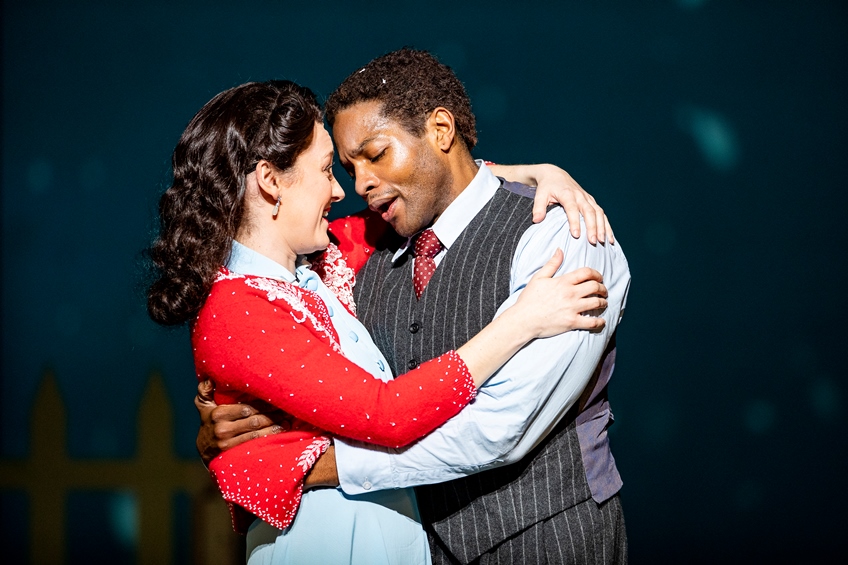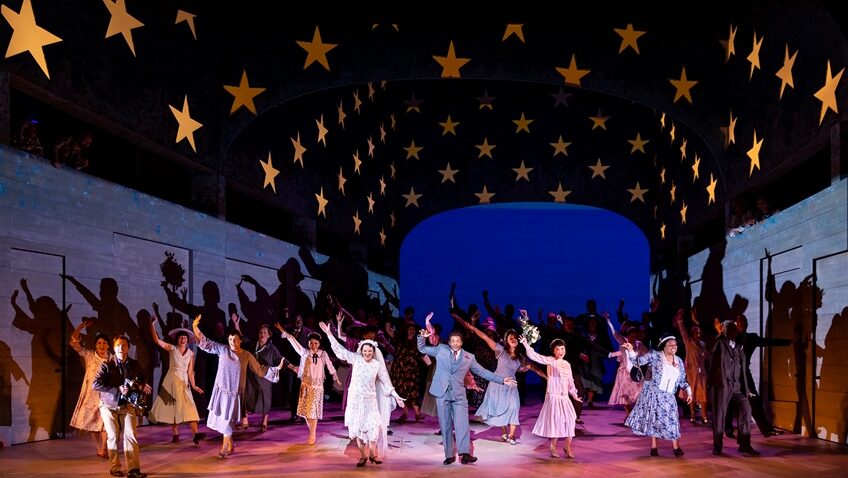First things first. It’s not a wonderful life for English National Opera at present. ENO has been at the London Coliseum since 1968 and has made opera accessible to new audiences with many memorable productions. The Arts Council’s decision to slash to zero its £12.8 million annual grant and order ENO to move North in order to qualify for future grants has been a great shock to everybody who loves the arts. A petition has been set up which you can sign by following this link.
Now let me review It’s a Wonderful Life, an American opera by Jake Heggie and Gene Scheer, which premiered in Houston in 2016 and is based on the famed Frank Capra film, starring James Stewart, which was based on The Greatest Gift, a privately published short story by Philip Van Doren Stern, who took his inspiration from Charles Dickens’s A Christmas Carol.
Audiences may be surprised to learn that when the film was first released in 1946, it was a critical and box-office failure. Capra, so popular in the 1930’s’, no longer appealed. A post-World War II public found his latest sentimental fantasy too old-fashioned and too sugary-sweet.
The film lost a lot of money. It was saved by television three decades later when its copyright ran out and it could be shown for free. It became one of the most famous tearjerkers of all time and also the best loved, especially at Christmas time.
George Bailey, decent, kind, a man of high ideals, has given up his ambitions to travel the world and his dreams of leaving his hometown for a better life elsewhere. He stays on to help the poorer people in the community by continuing to run his father’s building-and-loan association.
When the firm loses $8,000 and he finds he is bankrupt, he decides, as so many did during the Depression years, to commit suicide. His attempt to drown himself is thwarted by his guardian angel, who then goes on to show him what a terrible place his hometown would have been, had he not been born.

The major difference between the film and the opera is that Clarence Odbody, the old guardian angel, has now become Clara, an attractive female. Clarence, a second-class angel without wings, arrives very late in the film and his comic presence gives the film a big lift. The character, as created by Henry Travers, would be more suitable for a musical comedy aimed at family audiences.
Clara is played by Danielle de Niese, who is as airborne as Peter Pan. She is there, right from the very start and has a much bigger role to play. The story is seen through her eyes. Frederick Ballentine plays George, the James Stewart role. Michael Mayes is the villainous banker but he is not as evil a figure as Lionel Barrymore was in the film
Aletta Collins, production, conducted by Nicola Paiement and designed by Giles Cadle, misses the opportunity to make the charlestoning high school students the choreographic showstopper it should be.
Most disappointing of all, George’s hometown is not spectacularly transformed into a film noir sin-city and given the exciting, gaudy, nightmarish, noirish theatrical staging it frankly needs, if the opera is to compete with the film.
The production’s potentially most dramatic moment is when the music and the singing come to a complete stop, deliberately so; and for a long time, there is only spoken dialogue. It feels awkward because the dialogue is not delivered well enough.
The basic problem the opera has is that It’s A Wonderful Life isn’t really a good basis for an opera.
To learn more about Robert Tanitch and his reviews, click here to go to his website 




